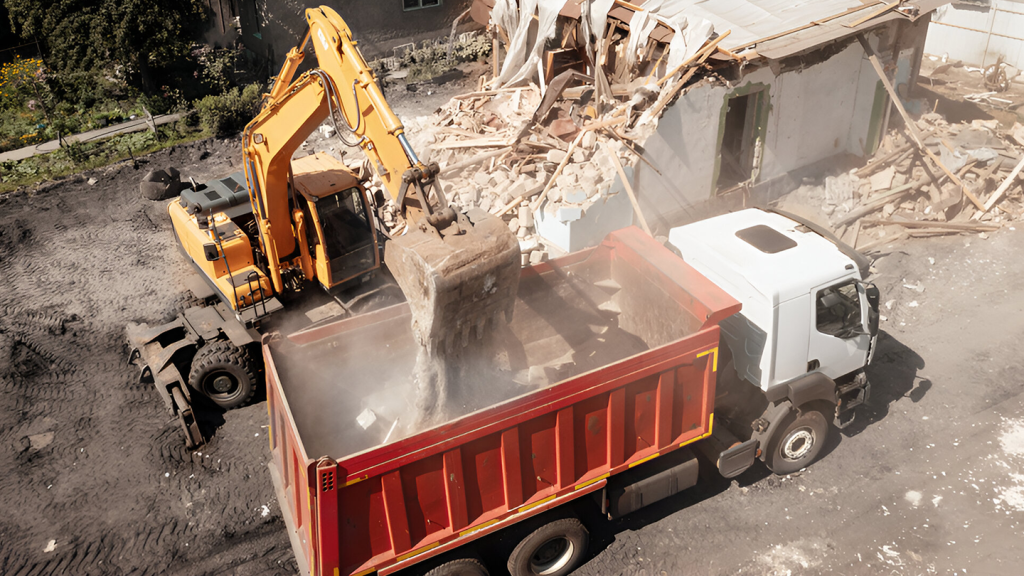Hey there! Ever wonder what happens to all the stuff when a building gets knocked down? Well, that’s where we come in! Welcome to our guide on handling all materials and waste during demolition. We’re High-Pressure LLC and believe in doing things responsibly and helping our planet. Let’s take you on a journey through the steps we follow to ensure we’re not just tearing things down but also doing it in a good way for the environment.
In the realm of construction and demolition, the impact on the environment can be significant. As the construction industry increasingly embraces sustainability, finding responsible ways to handle construction waste becomes paramount. This blog will explore a comprehensive blueprint for managing construction waste during demolition, ensuring that our practices align with environmental stewardship and contribute to a more sustainable future.
1. Pre-Demolition Planning
Sustainable construction waste management begins with meticulous pre-demolition planning. This phase involves an analysis of the structure slated for demolition to identify materials that can be salvaged or recycled. High-Pressure LLC, committed to responsible practices, initiates projects with a detailed pre-demolition assessment to maximize resource recovery and minimize waste.
2. Hazardous Material Identification and Removal
Before demolition begins, it’s essential to identify and safely remove any hazardous materials within the structure. Asbestos, lead, and other harmful substances require specialized handling and disposal. High-Pressure LLC collaborates with certified partners to conduct thorough abatement services, ensuring compliance with environmental regulations and safeguarding the health of workers and the community.
3. Selective Demolition for Material Reuse
Selective demolition is a key strategy to minimize construction waste by salvaging materials for reuse. High-Pressure LLC employs skilled operators to carefully dismantle structures, identifying and preserving materials such as reclaimed wood, metals, and architectural elements that can be repurposed in future projects.
4. On-Site Sorting and Recycling
On-site sorting facilities play a crucial role in responsible construction waste management during demolition. High-Pressure LLC sets up dedicated areas for sorting materials to facilitate the recycling of concrete, metals, wood, and other recyclables. This on-site approach streamlines the recycling process.
5. Concrete Crushing for Aggregate Reuse
Concrete, a major component of construction waste, can be recycled by crushing it into aggregate. High-Pressure LLC employs concrete crushing equipment on-site to repurpose demolished concrete into usable aggregate. This recycled material can be used in new construction projects, minimizing the need for virgin aggregates and reducing the environmental footprint of concrete production.
6. Collaboration with Recycling Partners
Responsible construction waste management extends beyond on-site practices. High Pressure LLC actively collaborates with recycling partners to ensure that materials requiring specialized processing, such as electronic waste or certain plastics, are handled responsibly. These partnerships contribute to the larger ecosystem of sustainable waste management.
7. Waste-to-Energy Solutions
In cases where recycling is not feasible, waste-to-energy solutions offer an environmentally responsible alternative. High-Pressure LLC explores options such as incineration with energy recovery and transforming non-recyclable materials into energy. While this approach is carefully considered due to potential environmental impacts, it can be a sustainable solution for certain types of waste.
8. Documentation and Reporting
Transparent documentation and reporting are integral to responsible construction waste management. High Pressure LLC maintains detailed records of the types and quantities of materials recycled, salvaged, or disposed of. This information ensures compliance with regulations and serves as a valuable resource for assessing the success of sustainable waste management practices.
Conclusion
Sustainable construction waste management during demolition is a collective responsibility that extends from pre-demolition planning to the final disposition of materials. High-Pressure LLC embraces this responsibility, integrating environmentally conscious practices into every stage of the demolition process. By prioritizing resource recovery, recycling, and responsible waste handling, we contribute to a more sustainable construction industry, where the legacy of each project is not only the structure left standing but also the positive impact on our planet.

